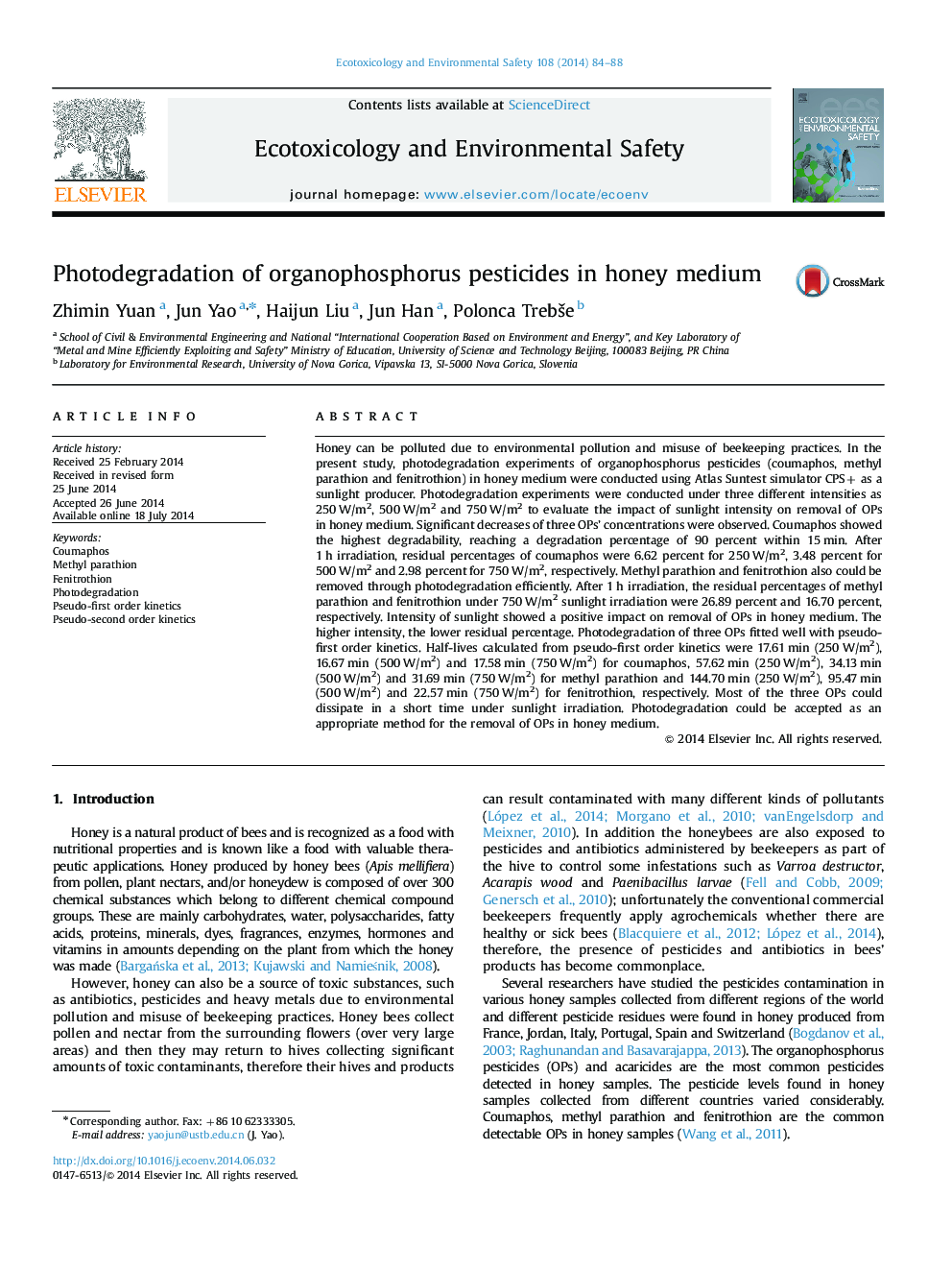| کد مقاله | کد نشریه | سال انتشار | مقاله انگلیسی | نسخه تمام متن |
|---|---|---|---|---|
| 4420101 | 1618955 | 2014 | 5 صفحه PDF | دانلود رایگان |
• Photodegradation experiments of three different OPs in honey medium were conducted.
• Three different irradiation intensities were used for experiments.
• Coumaphos showed the highest degradability.
• Three OPs showed the minimum residual percentages under 750 W/m2 sunlight irradiation.
Honey can be polluted due to environmental pollution and misuse of beekeeping practices. In the present study, photodegradation experiments of organophosphorus pesticides (coumaphos, methyl parathion and fenitrothion) in honey medium were conducted using Atlas Suntest simulator CPS+ as a sunlight producer. Photodegradation experiments were conducted under three different intensities as 250 W/m2, 500 W/m2 and 750 W/m2 to evaluate the impact of sunlight intensity on removal of OPs in honey medium. Significant decreases of three OPs’ concentrations were observed. Coumaphos showed the highest degradability, reaching a degradation percentage of 90 percent within 15 min. After 1 h irradiation, residual percentages of coumaphos were 6.62 percent for 250 W/m2, 3.48 percent for 500 W/m2 and 2.98 percent for 750 W/m2, respectively. Methyl parathion and fenitrothion also could be removed through photodegradation efficiently. After 1 h irradiation, the residual percentages of methyl parathion and fenitrothion under 750 W/m2 sunlight irradiation were 26.89 percent and 16.70 percent, respectively. Intensity of sunlight showed a positive impact on removal of OPs in honey medium. The higher intensity, the lower residual percentage. Photodegradation of three OPs fitted well with pseudo-first order kinetics. Half-lives calculated from pseudo-first order kinetics were 17.61 min (250 W/m2), 16.67 min (500 W/m2) and 17.58 min (750 W/m2) for coumaphos, 57.62 min (250 W/m2), 34.13 min (500 W/m2) and 31.69 min (750 W/m2) for methyl parathion and 144.70 min (250 W/m2), 95.47 min (500 W/m2) and 22.57 min (750 W/m2) for fenitrothion, respectively. Most of the three OPs could dissipate in a short time under sunlight irradiation. Photodegradation could be accepted as an appropriate method for the removal of OPs in honey medium.
Journal: Ecotoxicology and Environmental Safety - Volume 108, October 2014, Pages 84–88
